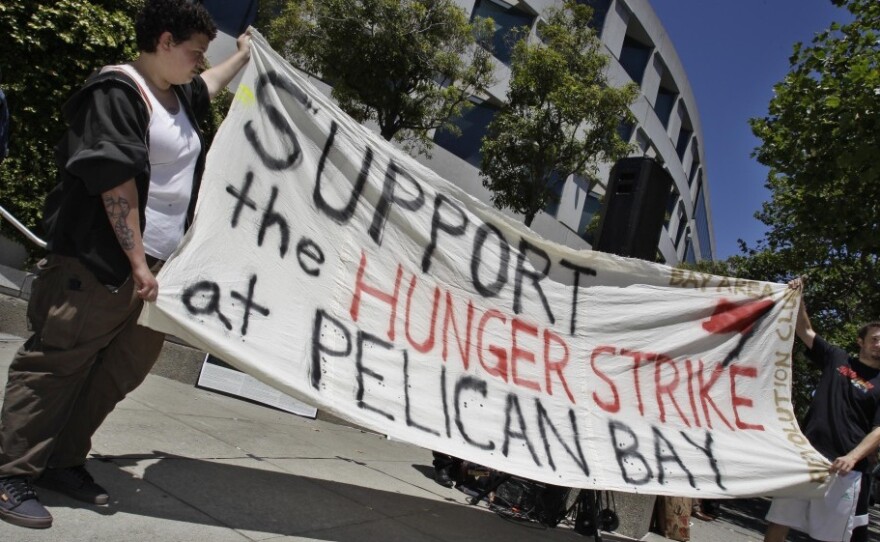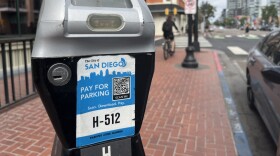A three-week hunger strike by prisoners in California further highlighted perceived problems with the state's huge prison system. This protest was chiefly driven by demands for an end to long-term solitary confinement. And while prison officials have shown some willingness to compromise, advocates for prison reform say there are much wider problems to address — many of them related to the way the gang system pervades the prisons.
(Note: Officials with the state's Department of Corrections and Rehabilitation say inmates have started eating again after some of their demands were met. Advocates for prisoners say they can't confirm that the strike has actually ended.)
Cruz Gallegos' brother was convicted of murder 26 years ago. Right now he's in California's Pelican Bay State Prison, near the Oregon border. Gallegos says he's been in solitary confinement for 20 years.
"They are supposed to rehabilitate him; that's not rehabilitation, it's not, it's inhumane, it's cruel," Gallegos says. "It's a punishment. He's already in prison; this is a prison within a prison."
Gallegos' brother is being held in a Secure Housing Unit. Prisoners are kept isolated in small cells 22-and-a-half hours a day and aren't allowed phone calls or visits. Officials say the SHU is for the most violent criminals and identified prison gang members.
For weeks, family members and prisoner rights advocates have been holding rallies in support of the hunger strikers.
Dolores Canales was at one earlier this week in downtown Los Angeles. Canales' son John, who is in jail for murder, has been in Pelican Bay's SHU for 10 years.
"He has not had any human contact whatsoever, he has not had a phone call," Canales says.
Strike Involved Thousands
Hundreds of prisoners started refusing to eat on July 1. At its peak, the protest spread to more than a third of the state's facilities, with up to 6,600 prisoners participating.
Terry Thornton, a spokeswoman for the state prisons, says officials are willing to meet some demands. Inmates will now get wool hats in cold weather, wall calendars and some educational opportunities. And Thornton says officials will review gang management and isolation policies. She says under current policy, someone is only put in the isolation unit after careful review.
"An investigator has to take all the information and it has to be from multiple sources," Thornton says. "You can't just look at one tattoo and say, 'Oh, that person is a gang member.'"
But advocates say the policies are arbitrary and getting out is nearly impossible. They say prisoners must renounce gang activity and provide information about other members. But Gloria Romero, a former state senator, says that's not an option.
"In the world of prison rules, to name names — essentially to snitch — is basically marking someone for death. You don't do that," Romero says.
Romero authored several prison reform laws during her 12 years in the legislature. She says keeping prisoners in severe isolation has done little to break up the state's violent gangs.
"It's a failed policy; it doesn't work," Romero says. "It hasn't worked for well over a decade."
Prison officials disagree and point to recent indictments of gang members as proof. A spokeswoman for the prisons says a review of isolation practices is under way and further changes will be seen in the coming months.
Copyright 2022 NPR. To see more, visit https://www.npr.org. 9(MDAzMjM2NDYzMDEyMzc1Njk5NjAxNzY3OQ001))







